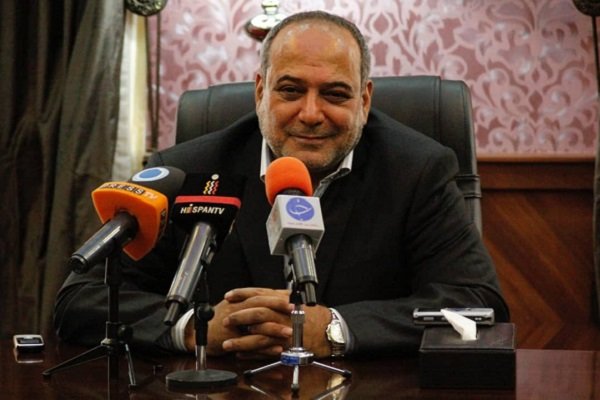Close to 265,000 passengers were transported by IranAir through 3,136 international and domestic scheduled flights in February, registering a more than 32% growth compared with the same month of 2019, says Managing Director of the flag carrier airline, Touraj Dehqani Zanganeh.
Noting that in February, Iran's flag carrier airline provided 377,000 seats and registered the passenger load factor of 67%, the official said, during February 2019, a total of 273,000 seats were available and the airline’s passenger load factor was 66%.
Load factor is an indicator that measures the percentage of available seating capacity occupied by passengers. A high load factor indicates that an airline has full planes with most seats occupied by passengers. If only 50% of the seats on a flight are occupied, the airline is not generating as much revenue as it could by flying a full plane.
“IranAir transported 842 tons of freight and 140 tons of postal shipments during the month under review, indicating a 31% and 72% increase compared with last year,” he was quoted as saying by the news portal of the Ministry of Roads and Urban Development.
IranAir History
IranAir, currently the country's biggest airline with 37 active planes (sharing the standing with Mahan Air with exactly the same number of aircraft) with an average age of 17 year, was founded in May 1944 and operated its first passenger flight right after World War II from Tehran to holy city of Mashhad.
The airline also had weekly freight services to Europe and its fleet consisted of DC-3s, DC-4s and Viscounts. Within 17 years (1945-62), the company developed into a major domestic airline with a few international flights per week.
In 1954, a second private airline, Persian Air Services was formed. Initially it operated only freight services to Europe, but in 1960 it commenced passenger flights to several European destinations using leased equipment.
The geographical situation of Iran with its expanding spacious levels, relative remoteness of crowded areas from each other, lack of adequate means of transportation (railroads and roads), the need to initiate safe and fast connections, and the lack of an orderly equipment with high capacity to revive mutual aviation rights with other countries and secure more welfare and comfort for Iranians led to a ratification by the Council of Ministers to establish a national airline corporation on Feb. 10, 1961.
Subsequently, on Feb. 24, 1961, both Iranian Airways and Pars Airways merged to form a new airline called IranAir.
IranAir, the first airline to order and operate Boeing 747SP in the world, having the mission of meeting the domestic aviation transportation needs accompanied by observing the safety principles and forming transportation services with neighboring and countries in distance, officially commenced its activities in April 1962.
By late 1970s, IranAir was the fastest growing airline in the world and one of the most profitable. In 1976, IranAir was ranked second only to Qantas, as the world’s safest airline, having been accident-free for at least 10 consecutive years. Although both airlines were accident-free, IranAir came second only because of fewer operational hours flown compared to Qantas.
After the Islamic Revolution, as a result of economic sanctions imposed on Iran by the United States, IranAir was unable to expand or replace its fleet.
The prolonged period of time that IranAir was under international sanctions and barred from purchasing spare parts and new planes led to a dramatic rise in its average fleet age and plunging safety record.
The imposition of international sanction over Iran's nuclear program exacerbated the situation for the flag carrier Iranian airline.
However, the nuclear deal Iran signed with world powers in 2015, which led to the removal of international nuclear sanctions against Tehran, paved the way for IranAir to renew its aging fleet.
The flag carrier secured massive orders from giant plane manufacturers after the conclusion of the nuclear deal. Its orders included 100 Airbus, 80 Boeing and 20 ATR passenger planes, with an aggregate value of $20-30 billion.
Later, as the US reimposed unilateral sanctions against the Islamic Republic, the delivery process of orders placed by IranAir came to a halt after the US Treasury Department revoked the licenses of Boeing and France’s Airbus to sell commercial planes to IranAir.
Although Airbus is based in France, it must have the approval of the US Treasury’s Office of Foreign Assets Control to sell planes to Iran because at least 10% of the components of the aircraft are US-made. This is also the case with any other planemaker.
An Airbus A321, two Airbus A330s and 13 ATR 72-600 turboprops, five of which were delivered hours before the first reimposition of the first batch of sanctions in August have been delivered to Iran as part of the contracts. The rest of the orders have been cancelled, as OFAC revoked previously issued licenses allowing the sales of brand-new airplanes to Iran. This is while selling airplanes to Iran was among the issues directly addressed in the nuclear agreement.


